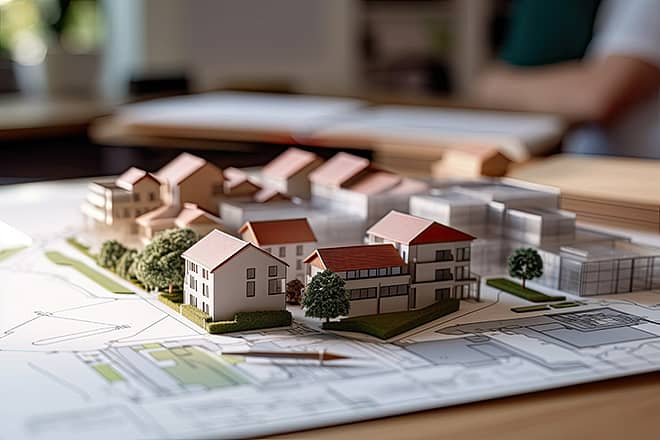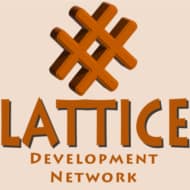EXECUTIVE SUMMARY
LATTICE DEVELOPMENT NETWORK is currently in the planning stage for developing the first of its kind workers housing cooperative development project in Weld County, Colorado. Any and all input and/or comments from the community are welcome and encouraged.

A Proven Model of Homeownership
In response to the need for affordable housing options in Weld County, Lattice Development Network (LDN) has prepared this concept paper for the development of Workforce Housing Cooperatives (WHC) for consideration by the community. Housing Co-ops offer a practical and affordable alternative to traditional homeownership, while providing the same critical financial benefits such as equity accumulation, and a more stable and vibrant community.
Proposed Project
Development of 300-unit Workforce Housing Cooperative in Weld County, Colorado
Introduction
Cooperative housing offers a unique approach to affordable living, where residents collectively own and manage the property. This proposal outlines the establishment of a cooperative housing project in Weld County, addressing the critical need for affordable housing for working families.
Housing Shortfall
The population of Weld county as increased 24% since the census in 2010 and now has a total of 112,465[1] housing units. The number of housing units however, increased by only 16.6% over the same period – a 7.4% supply shortfall. A booming economy has increased jobs and wages but contributed to also higher housing cost. A skilled labor shortage has push up costs on new housing construction. Meanwhile the population has continued to grow, far outstripping new housing supply.
Nationwide, Colorado ranks 10th as most expensive State in terms of housing costs. As of 2019, the Statewide shortage of rental homes that were affordable and available for Low-income Households was 114,071 units[2]. The Fair Market Rent for a two-bedroom apartment is $1,317 and the State Housing Wage is $25.33 per hour. Meaning, in order to afford this level of rent and utilities without paying more than 30% of income on housing – a household must earn $4,291 monthly or $52,694 annually. Assuming a 40-hour work week this amounts to $25.33/hour. By comparison, Weld County is somewhat more affordable. The FMR is $992, the Hourly wage is $19.08, and the Annual Income needed is $39,680.
Goals and Objectives
Develop a cooperative housing project in Weld County, Colorado, to provide affordable housing for up to 300 families earning 80% of the annual median income; The planned community is designed to provide homeownership opportunities, foster community stabilization and support workforce development.
Current Landscape
In 2020, the United States boasted as many as 1 million cooperative housing units.* Since then, thousands of units were added as this model has gained popularity due to its affordability and community-centric approach.
Housing cooperatives have served the needs of millions of people all over the world for hundreds of years, including right here in Weld County. They come in all types and sizes to fit the needs of the coop members. Some for example, offer a homeownership model that allows residents to create wealth through reduced monthly housing costs and by building equity over time. Others limit the amount of equity a coop member can accumulate in order to keep the month carrying cost (rent) to a minimum. Coops can be formed around any common cause, principle, demographic or other factors such as income levels and they remain an important element of the nation’s housing mix.
Benefits of Housing Cooperatives
- Shared equity approach – the appreciating value of the property is controlled and leveraged to promote affordable housing.
- Lower cost of homeownership through reduced per-unit land and construction costs
- Cooperatives empower residents by giving them control over management and operations
- Shared involvement of resident owners in asset and building management
- Avoiding displacement of longtime residents upon expiration of affordable housing subsidies and restrictions (including Low Income Housing Tax Credits)
- Favorable financing and tax incentives for development
- Possibility of grants to reduce overall cost and increase affordability
- Provides an elegant exit strategy for investors
- Provides coop members the same tax and equity benefits as homeowners.
Low-cost Financing
The FHA 213 Section program of HUD, allows for financing of new cooperatives and conversions. Provides the longest terms (40 years), maximum leverage, lowest fixed rates of all programs, but can be more costly than other types of financing. The National Cooperative Bank (NCB) also has financing programs that provide permanent financing and refinancing with repair funds for cooperatives. Loans can range in terms of 5 to 30 years. Cooperative banks will also provide Share Loan Financing to Coop members.
Opportunity Zones
Opportunity Zones were recently created beginning in 2017 by HUD and the State Governors to spur investments in these underserved and underdeveloped areas. Investors create Qualified Opportunity Funds (QOF), which have the flexibility to invest (directly or indirectly) in equipment, buildings, property, and businesses. Entrepreneurs and developers created viable projects at the local level with QOF as a funding source. Currently, there are 2 designated Qualified Opportunity Zones in Weld County.

Types of Cooperative Housing:
1. Limited Equity Cooperatives (LEC): Residents benefit from limited appreciation, maintaining affordability over time.
2. Market-Rate Cooperatives: Operate similarly to traditional housing markets, but with resident governance.
3. Group Equity Cooperatives: Residents jointly own and manage the property, sharing responsibilities and benefits.
Current Cooperative Housing Landscape:
In 2020, the United States boasted as many as 1 million cooperative housing units.* Since then, thousands of units were added as this model has gained popularity due to its affordability and community-centric approach.
Project Overview:
1. Location: Identify a suitable site in Weld County, considering proximity to workplaces, schools, and amenities.
2. Unit Design: Develop plans for between 100 to 300 units, ensuring a mix of housing types to accommodate diverse family needs.
3. Affordability Criteria: Establish eligibility criteria based on 80% of the area median income.
4. Community Spaces: Integrate communal areas for meetings, events, and recreational activities to enhance community bonding.
Prefab Housing Construction:
Standardized, prefabricated housing units will lower per-unit construction cost while insuring quality control. A production facility will be Incorporated as part of the coop to produce the housing units, provide job training and employment.
Funding and Partnerships:
Seek funding through a combination of public-private partnerships, grants, and low-income housing tax credits to ensure financial feasibility.

Timeline:
1. Feasibility Study: 1st half of 2024
2. Site Selection: 2nd half of 2024
3. Design and Planning: January – December 2024
4. Fundraising: 2024-2025
5. Construction: 2025-2026
6. Occupancy: 2027
Conclusion
Housing Cooperatives provide a viable, cost-effective and market-based option for meeting the need for affordable housing in Weld County. They are designed to be self-sustaining, affordable and to provide the best quality of life possible for its members. They are also profitable for investors.
The newly created Opportunity Zones combined with the development of HUD financed Home Co-ops provide a unique opportunity to bridge the gap of affordable housing. The development of home co-ops can provide an attractive, sustainable and affordable housing option in Weld County and should be encouraged.
* The Community Association Fact Book 2020
[1] 2010 US Census data
[2] National Low-Income Housing Coalition, 2019 Colorado Housing Profile


